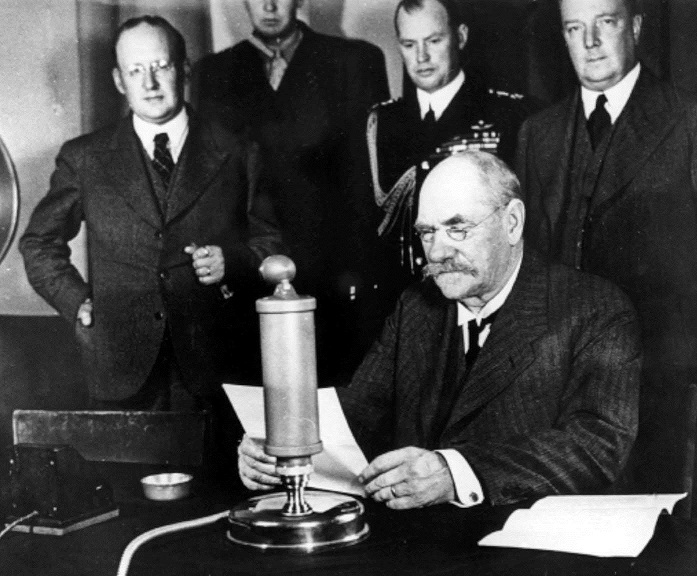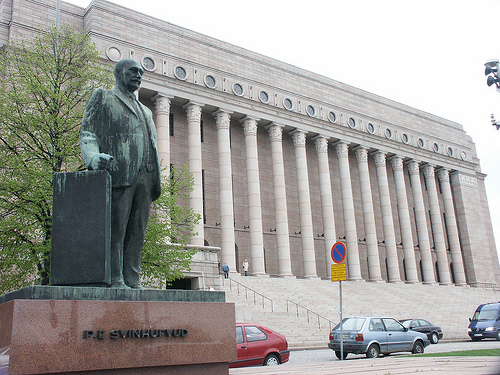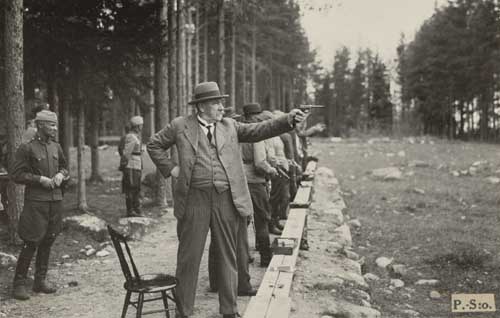<Back to Index>
- Physician Niels Ryberg Finsen, 1860
- Artist Roelof Paul Citroen, 1896
- 3rd President of Finland Pehr Evind Svinhufvud af Qvalstad, 1861
PAGE SPONSOR

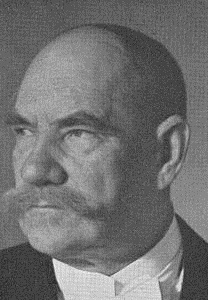
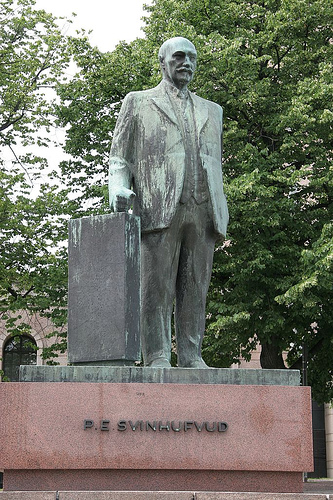
Pehr Evind Svinhufvud af Qvalstad (commonly P. E. Svinhufvud), December 15, 1861 – February 29, 1944) was the third President of Finland from 1931 to 1937. Serving as a lawyer, judge, and politician in the Russian Grand Duchy of Finland, he played a major role in the movement for Finnish independence. Svinhufvud was the first Head of State of independent Finland, first as Chairman of the Senate, and then subsequently as Protector of State or Regent. He also served as Prime Minister 1930 - 1931.
As a conservative who was strong in his opposition to communism and the Left in general, Svinhufvud did not become a President embraced by all the people, although as the amiable Ukko - Pekka (Old Man Pete), he did enjoy wide popularity. Pehr Evind Svinhufvud af Qvalstad was born in Sääksmäki. He was the son of Pehr Gustaf Svinhufvud af Qvalstad, a sea captain, and Olga von Becker. His father drowned at sea off Greece in
1863, when Pehr Evind was only two years old. He spent his early
childhood at the home of his paternal grandfather, Pehr Gustaf
Svinhufvud af Qvalstad (a provincial treasurer of Häme), at Rapola, where the family had lived for five generations. The Svinhufvuds were a Swedophone noble family tracing their history back to Dalarna, Sweden. Pehr Gustaf Svinhufvud af Qvalstad, an army lieutenant in the reign of Karl XII, had moved from there to Rapola after the Great Northern War. The family had been ennobled in Sweden in 1574, and it was also introduced to the Finnish House of Nobility in 1818. Rapola was sold when his grandfather shot himself in 1866, and Svinhufvud moved to Helsinki with his mother and his sister. He attended the Swedish language high school in Helsinki. In 1878, at the age of 16, he enrolled at the Imperial Alexander University of Helsinki. There he gained a Bachelor's degree in 1881, and then completed a Master of Arts degree in
1882; his main subjects being Finnish, Russian and Scandinavian
History. After this, he took a Master of Laws degree, graduating in
1886. In 1889, Svinhufvud married Alma (Ellen) Timgren (1869 – 1953).
They had six children, Yngve (1890 – 1991), Ilmo Gretel (1892 – 1969), Aino
Mary (1893 – 1980), Eino (1896 – 1938), Arne (1904 – 1942), and Eivind
(1908 – 1969). Svinhufvud's
career in law followed a regular course: he worked as a lawyer, served
at district courts, and served as a deputy judge at the Turku Court
of Appeal. In 1892 he was appointed as a member of the Senate's
law drafting committee at the relatively young age of 31. For six years
he worked in the committee, initially redrafting taxation laws. As head
of his family, Svinhufvud participated as a member of the Estate of Nobles in the Diet of Finland in 1894 and 1899 - 1906. He
found his work on the law drafting committee tedious and moved to the
Court of Appeal as an assistant judge in 1902, his long term goal being
the easy life of a rural judge. Svinhufvud stayed mainly in the
background until 1899, when Imperial Russia initiated a Russification policy for
the autonomous Grand Duchy. The Finnish answer was mainly legislative
and constitutional resistance, of which Svinhufvud became a central
figure as a judge in the Court of Appeals. When
some inhabitants of Helsinki lodged a complaint with the Turku Court of
Appeal in 1902, concerning violence employed by the Russian Governor of Uusimaa to break up a demonstration against military call-ups, the court initiated proceedings against Governor - General Bobrikov.
Bobrikov demanded that they be stopped, and when this did not happen,
he used a decree which the Finns regarded as illegal to dismiss sixteen
officials of the court, including Svinhufvud. Originally a moderate of the Finnish Party or Old Finnish Party, after his dismissal Svinhufvud became a strict constitutionalist who
regarded the resistance of judges and officials as a question of
justice, not believing that political expediency offered compromises.
He moved to Helsinki to work as a lawyer and participated in the
political activities both of the Diet and of a secret society, Kagal. Svinhufvud played a key role in the birth of a new parliamentary system in 1905 and he was elected as a Young Finnish Party member of the new Parliament in
1906. Svinhufvud went on to serve as a member of Parliament on four
occasions (1907 – 1908, 1908 – 1914, 1917, and 1930 – 1931). After being appointed as a judge in Heinola in 1906, he attempted to keep out of the front line of politics. However he was elected Speaker of the Parliament in 1907, largely because the majority Social Democrats considered
him "the best known opponent of illegality". Svinhufvud's parliamentary
opening speeches, in which he laid emphasis on legality, led to the
Tsar dissolving Parliament in both 1909 and 1910. He served as Speaker
until 1912. Svinhufvud also served as a judge in Lappee 1908 - 1914. During the First World War, when Russia replaced various Finnish officials with Russians. Svinhufvud refused to obey the orders of the Russian procurator Konstantin Kazansky, which he considered illegal, and this led to his removal from office as a judge and being exiled to Tomsk in Siberia in
November 1914. In his Siberian exile, he spent his time hunting and
mending his clothes, still keeping secret contact with the independence
movement. When he left Finland, he had promised to return "with the help of God and Hindenburg". When news of the February Revolution reached Svinhufvud, he walked to the town's police station and bluntly announced, "The person who sent me here has been arrested. Now I'm going home." In Helsinki he was greeted as a national hero. Svinhufvud was appointed as Chairman of the Senate on November 27, 1917, and was a key figure in the announcement of Finland's declaration of independence on December 6, 1917. He also personally went to Saint Petersburg to meet Vladimir Ilyich Lenin, who somewhat hesitatingly gave his official recognition of Finnish independence. Svinhufvud's Senate also authorized General Mannerheim to form a new Finnish army on the basis on White Guard, the (chiefly Rightist) volunteer militia called the Suojeluskunta, an act simultaneously coinciding with the beginning of the Civil War in Finland. During
the Civil War, Svinhufvud went underground in Helsinki and sent pleas
for intervention to Germany and Sweden. The conflict also turned him
into an active monarchist, though not a royalist. In March 1918 he managed to escape via Berlin - Stockholm to the Senate, now located in Vaasa, where he resumed his function as Head of Government. In this role he pardoned 36,000 Red prisoners in the autumn of 1918. On May 18, Svinhufvud became Protector of State or Regent, retaining this post as Head of State after he stood down as Chairman of the Senate on May 27. After Germany's defeat in World War I, and the failed attempt to make Finland a Monarchy under the King of Finland (Frederick Charles of Hesse was elected), Svinhufvud withdrew from public life and was active only in the Rightist Suojeluskunta militia. In 1925 he was the Presidential candidate for the conservative Kokoomus party, but was not elected. After the emergence of the anti - communist Lapua Movement, President Relander appointed him as Prime Minister of Finland on
the Lapua Movement's insistence. Svinhufvud was elected President in
1931, and appointed Mannerheim as Chairman of the Defence Council, not
least of all as an answer to the Lapua Movement's fear of having fought
the Civil War in vain. He resisted both communist agitation
and the Lapua Movement's exploits. All Communist members of parliament
were arrested. In February 1932 there was a so-called Mäntsälä Rebellion, when the Suojeluskunta - Militia and
the Lapua Movement demanded the Cabinet's resignation. The turning
point came with the President's broadcast radio speech, in which he
called on the rebels to surrender and ordered all Civil Guard members
who were heading for Mäntsälä to return to their homes: Svinhufvud was not a supporter of Parliamentarism,
or to put it differently, he believed that the President had a right to
choose the Cabinet ministers after first consulting the parliamentary
parties. Evidence of this semi - presidential attitude was the minority
government of Toivo M. Kivimäki, which survived for 3 years and 10
months (December 1932 - October 1936). Svinhufvud strongly supported
it,
because he believed that it could effectively fight the Great
Depression (which it did, generally speaking), he believed that
Kivimäki had a strong personality like himself, and possibly
because he hoped that the Agrarians and Swedish People's Party would
let the Kivimäki government remain in office as a lesser evil, the
greater evil being an Agrarian - Social Democratic government. On
the other hand, when a right wing Conservative member of Parliament,
Edwin Linkomies, proposed in 1934 that Finland abandon parliamentarism
in favour of a government led by the President and that the President
be given an absolute veto power over the laws passed by the Parliament,
Svinhufvud opposed his ideas. In Svinhufvud's opinion, the Finnish
President had enough power to lead the country, provided that the
President had a strong personality. He believed it to be better for
Finland if the Social Democrats could be kept outside of the Cabinet.
In his opinion, they would implement too radical reforms that would
lead the Finnish society into chaos or Marxism. On the other hand, he
was realistic enough to admit privately to the German Ambassador to
Finland, Wipert von Blücher, that if he was re-elected, he would
be unable to keep the Social Democrats in the opposition. They
were, after all, Finland's largest political party with over 40 %
of the deputies. It was
due to this that, in the Presidential election of 1937, the Social
Democrats and the Agrarian party voted against him. He was not
re-elected. At the end of Winter War, he unsuccessfully sought audience with both Adolf Hitler and Benito Mussolini but met only Pope Pius XII. During the Continuation War he supported the idea of an expansionistic war. Svinhufvud died at Luumäki in 1944, while Finland was seeking peace with the Soviet Union. He refused to Finnicize the name of his 500 year old noble house.
The largest Finnish-built steam locomotive (4-6-2 type) and the service rifle M39 of the Finnish army were nicknamed "Ukko - Pekka" after him.
